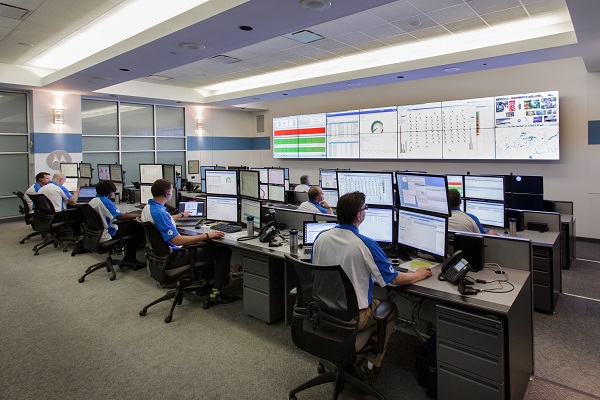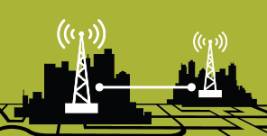Drone programs in public safety are proven to improve situational awareness, reduce response times, and optimize resources. As UAV (Unmanned Aerial Vehicle) usage increases, one big question remains for many agencies– where do I start?
Here are five key steps to set yourself up for maximum success!
Step 1: Determine what kind of program you want to build
Defining your goals and outcomes, identifying the use cases, and choosing what types of missions your UAS will be involved in are foundational choices. These decisions will define everything from the hardware needed (aircraft, sensors, accessories) to the required certifications to your hardware needs.
Today, there are two primary models in public safety:
The first option is the “in the trunk” or “tactical” model, intended for use cases like capturing evidence and streaming live video. Here, first responders directly leverage drones to get a full aerial view of the scene and share that perspective with additional viewers in real-time. They capture videos and photos to store as evidence. Adding thermal cameras, speakers, microphones, and other accessories can open up a host of different mission types.
The second option is the Drone-as-a-First-Responder (DFR) model for proactive emergency response. Drones are integrated fully into daily operations, using a UAV to provide eyes on the scene before officers arrive. Incidents have faster responses and better-informed resource allocation while keeping officers safer through better situational awareness. DFR offers aerial visibility at a fraction of the cost of helicopters and makes aerial support available to agencies of all sizes.
The most successful programs engage their communities early and often, communicating transparently about how the drones will be utilized and offering ample opportunity to ask questions. Hosting regular town hall meetings, listening to community concerns, and engaging with your local chapter of the ACLU (or equivalent community organizations) are encouraged to ensure you win and retain full support.
Step 2: Secure the needed certifications
Next, it’s time to seek the appropriate certifications for your program.
For tactical operations, Part 107 licensing of pilots may be sufficient to get started. The Part 107 certification is the most common and the easiest to obtain. It is granted only to individuals, not agencies. The pilot is required to pass an FAA proctored test on UAS related topics. Individuals may fly for agencies, but under their own Part 107 certificate and within the regulations set forth.
Organizations can also obtain a Certificate of Waiver or Authorization (COA). COAs require more effort to get and enable agencies to operate UAS as public aircraft. COAs are ideal because they can allow for operations within controlled airspace, the ability to secure provisions like Beyond Visual Line of Sight (BVLOS), and include an automatic waiver for flight over people in situations where it is necessary to safeguard human life. Application begins by first proving to the FAA that your organization is a government agency and then applying for the COA. The process can take one to three months, depending on the type and complexity of the request.
Many agencies choose to obtain both types of certificates, securing a COA for the agency and Part 107s for all pilots, allowing for the broadest operating authority, while having all pilots meet the only federal standard and certification for drone flight. Having both enables agencies to adhere to the rules that work best in varying situations.
Step 3: Select your hardware & software
Driving the highest possible return on your drone investment requires the proper hardware and software to help you execute against your program goals, from improving response time to ensuring officer safety and better resource allocation.
For those flying tactical missions, choosing hardware and software that provide high-quality video and images will be critical to delivering a full in-field view of the situation at hand. You may choose smaller hardware that is easier to bring to a scene and select accessories like thermal cameras, spotlights, or speakers, depending on your mission types.
For those implementing DFR models, hardware and software that enables full drone telepresence (video and audio input to a remote operator that gives them the point of view of a pilot on the UAV) allows the ability to operate the drone remotely. The right experts can take control and gain the visibility needed for informing the appropriate response. Larger drones with longer flight times and more diverse payloads are preferable.
Remember that your agency may have grants available to help you secure funding to initiate your program.
Step 4: Tackle team training
When you submit your COA application, you’ll receive information on the training your team needs for your UAV program. Agencies should ensure that all team members can quickly and easily access the live-streaming in the field.
Additionally, you may want to select a strong training provider to help guide your agency through SOP/SOG and program development. Understanding where within the agency to house the UAS program, developing robust operations, training, and currency manuals, and compliance with FAA documenting and reporting requirements are all key to a successful and safe UAS program
Step 5: Roll-out
You’re ready to launch! It’s essential to assign a program owner responsible for monthly reporting and ongoing program management. In step one, you laid out the goals you wanted to achieve with your drone program. Now you need to track the data for checking progress against those goals.
For example, if a key goal is to improve resource allocation, ensure you capture data on the number of calls the drone responds to that do not require officer response, therefore freeing up team time to focus on higher-priority incidents. You may use flight tracking software to securely store data like flight hours, hours per drone for maintenance, flight paths, and mission history.
Congratulations!
Drones are responding to calls, and the operation is in full swing. Now what? Set up program checkpoints to monitor progress and make needed adjustments. For example, if early data shows higher call volumes matching your supported mission types in one area than another, you can easily adjust coverage areas to ensure the drones are providing the maximum value. Continue to meet with your community to maintain a broad base of support. As your program shows value, you may begin to plan expansions to additional mission types, coverage areas, or deployment models.
Want to learn more? Are you interested in a demo of our CAPE platform? Our team at Motorola Solutions will be glad to connect with you and learn more about your program, wherever you’re at in the implementation process.
Visit our contact us form, and we’ll be glad to help.




